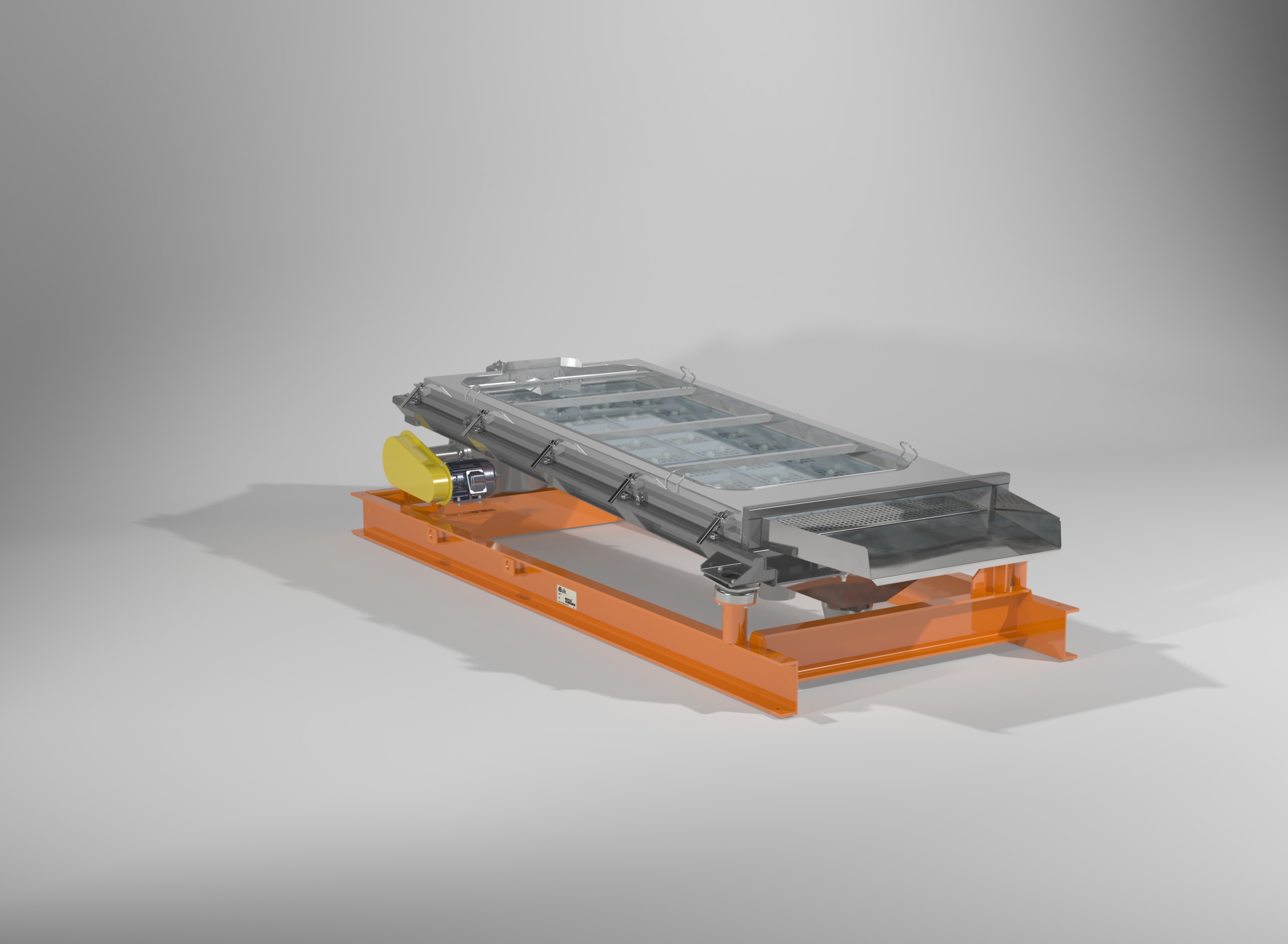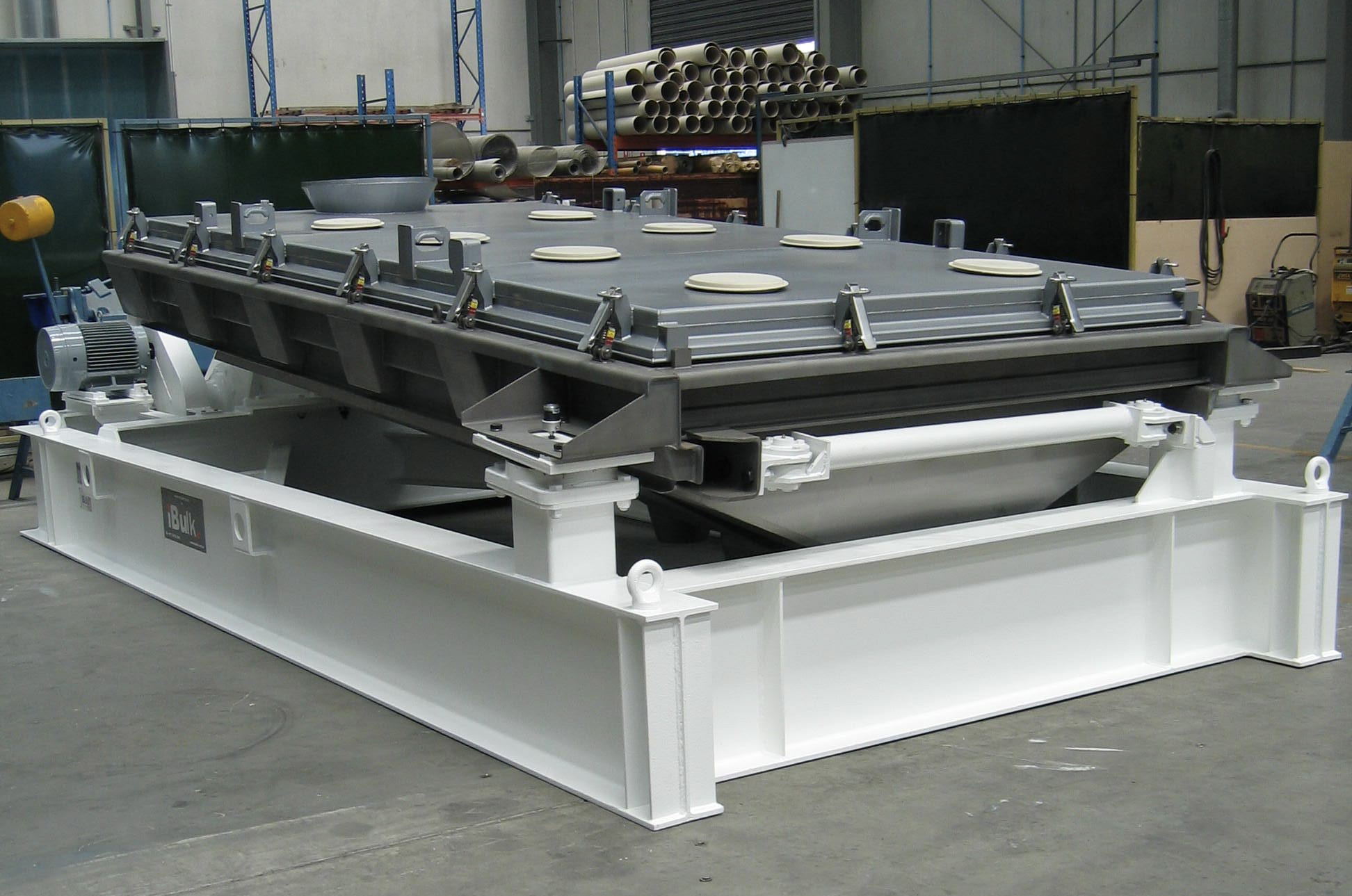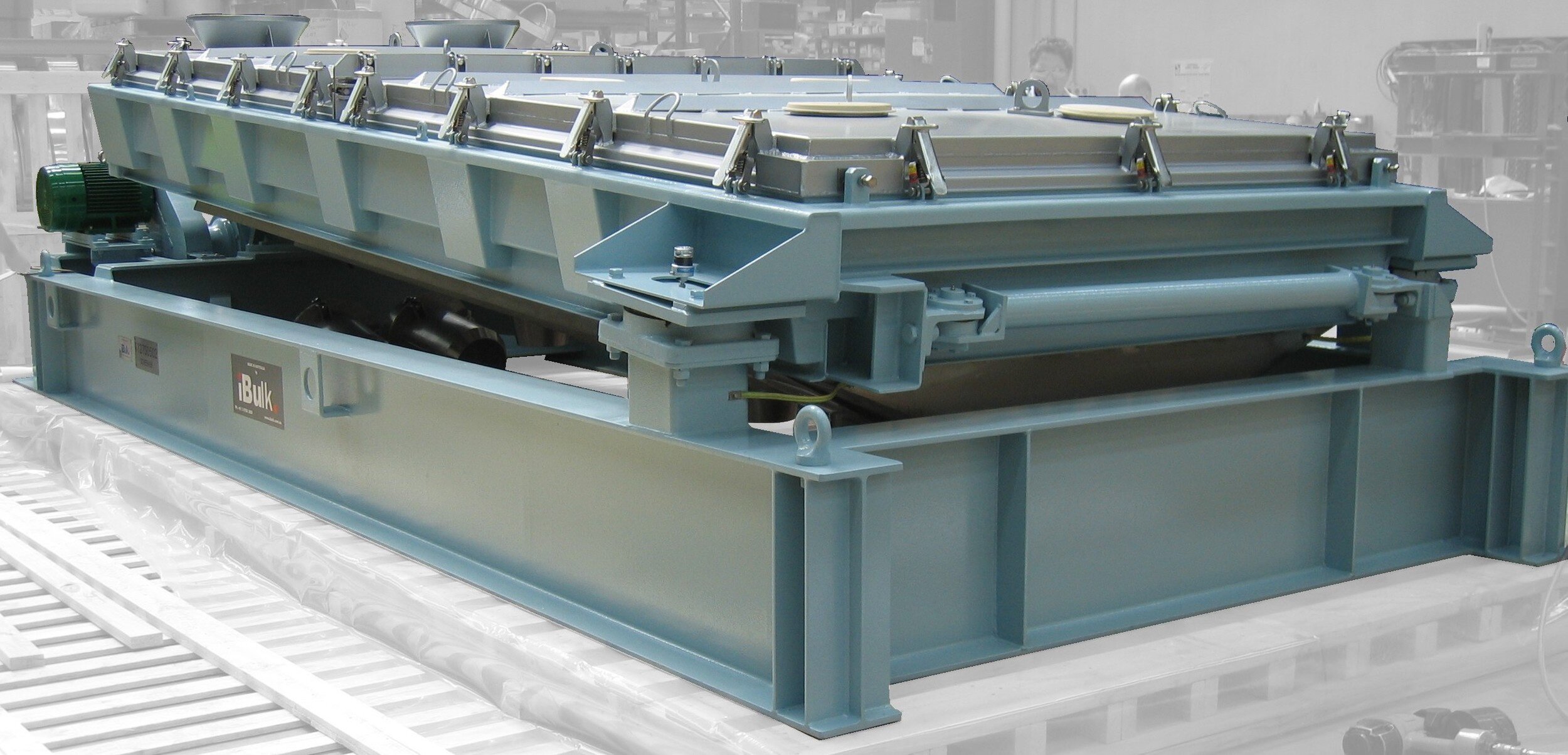Rotex Gyratory Screeners
Rotex Gyratory Screeners are self-contained screening machines for separating dry materials according to particle size.
Rotex Screeners provide unusually high efficiency and capacity because they have a unique gyratory-reciprocating motion of the near-horizontal screen surface, combined with a positive screen mesh cleaning system.
Continuing development, guided by hundreds of applications throughout many of industries has resulted in the excellent performance, ease of operation and durability of the iBulk Rotex Gyratory Screeners.
Gyratory Reciprocating Motion
Gyratory motion rapidly distributes, stratifies and separates. This unique gyratory motion pattern imparts a combination of actions to the material as it passes along the screen surface. It begins with a horizontal circular motion at the feed end, gradually diminishing along the length of the machine to an elliptical path, and finally to an approximate straight-line motion at the discharge end. There is no vertical component to this motion – thus keeping the material in constant contact with the screen surface.
DISTRIBUTES: Circular Motion at the Feed
The gyratory motion at the feed side of the machine immediately spreads the material across the full width of the screen surface to maximise screen utilisation. At the same time, this motion stratifies the material, causing the fines to sink down against the screen surface. The particles that are appreciably smaller than the openings, quickly pass through at this part of the screen.
STRATIFIES: Changing to Elliptical Motion at Centre
As the circular motion diminishes into an elliptical path, the gentle near-horizontal motion causes the fine particles closer in size to the screen mesh – the near-size particles – to fall through the mesh openings.
SEPARATES: Straight-Line Motion at Discharge End
The nearly linear reciprocating motion at the discharge end of the iBulk Rotex Screener removes those particles closest in size to the mesh openings, while gently conveying the oversize material off the screen. In addition, the unique iBulk Rotex ability to advance or retard material flow at the discharge end, allows further separation fine-tuning to achieve the most efficient and accurate motion for the application.
Advantages
Lower headroom permits operation in confined areas, reducing cost of building construction and maintenance.
Less conveying equipment is required for elevating material to the feed point.
Automatic Screen Tensioning
Easy Screen Removal
Applications and Industries
Rotex Screeners are operating at hundreds of locations, screening literally thousands of different materials. While not all inclusive, the following list details some of the industries and applications where Rotex is the screener of choice.
Abrasives
Carbon Products
Clay
Food products: like sugar
Pharmaceutical Applications
Grain Cleaning
Paper Pulp Chips
Plastic Pellets
Installation
The Rotex range consists of floor mounted and suspension options.
FLOOR MOUNTING
The low transmitted forces of the Rotex Screeners counterbalanced drive allow the unit to be floor mounted in properly designed structures where some other types of equipment cannot. Mounting may be directly on the floor or on an elevated structural steel framework, the elevated position permitting drums or other equipment to be located under the machine. iBulk engineers can recommend a stand for any specific application.
CABLE SUSPENSION
Rotex Screeners can be cable-suspended from the four corners of the machine, thereby isolating out-of-balance screening forces from the surrounding structure. Accurate counterbalancing of the iBulk Rotex Screener makes this installation option possible. If the existing overhead structure is not suitable for cable suspension, or is structurally unable to support the cable-suspended unit, the Rotex Screener can be suspended from a floor-mounted cable support cradle. As with conventional cable suspension, this option effectively isolates the horizontal out-of-balance screening forces, helping to minimize costs for new structures as well as permitting the use of older structures which might not otherwise support cable-suspended equipment.











